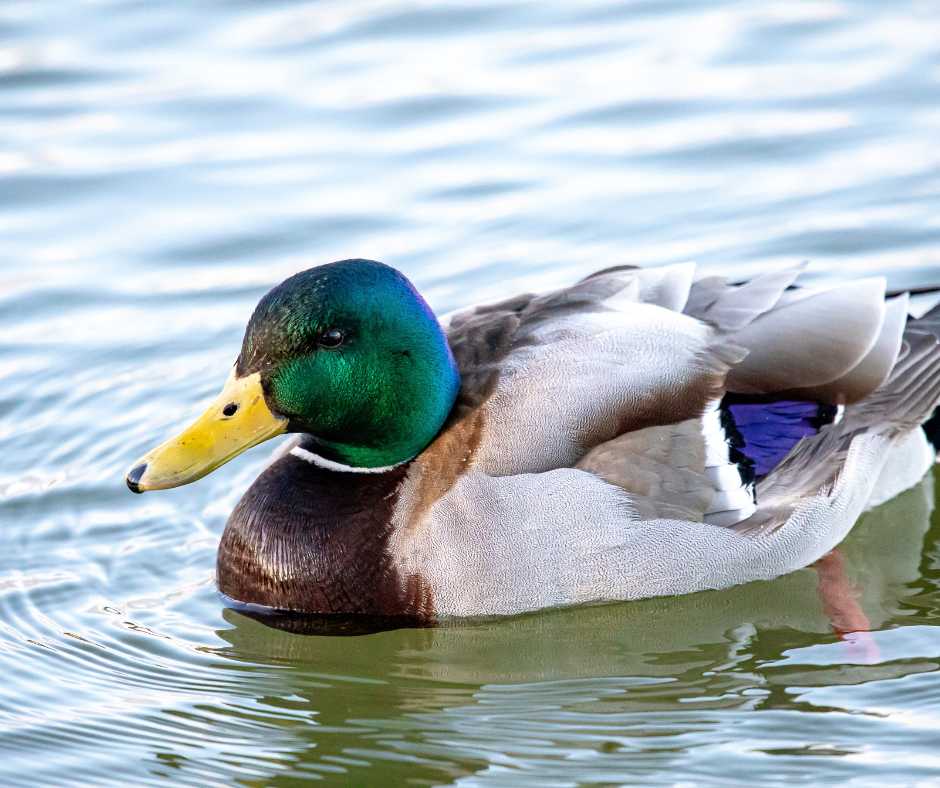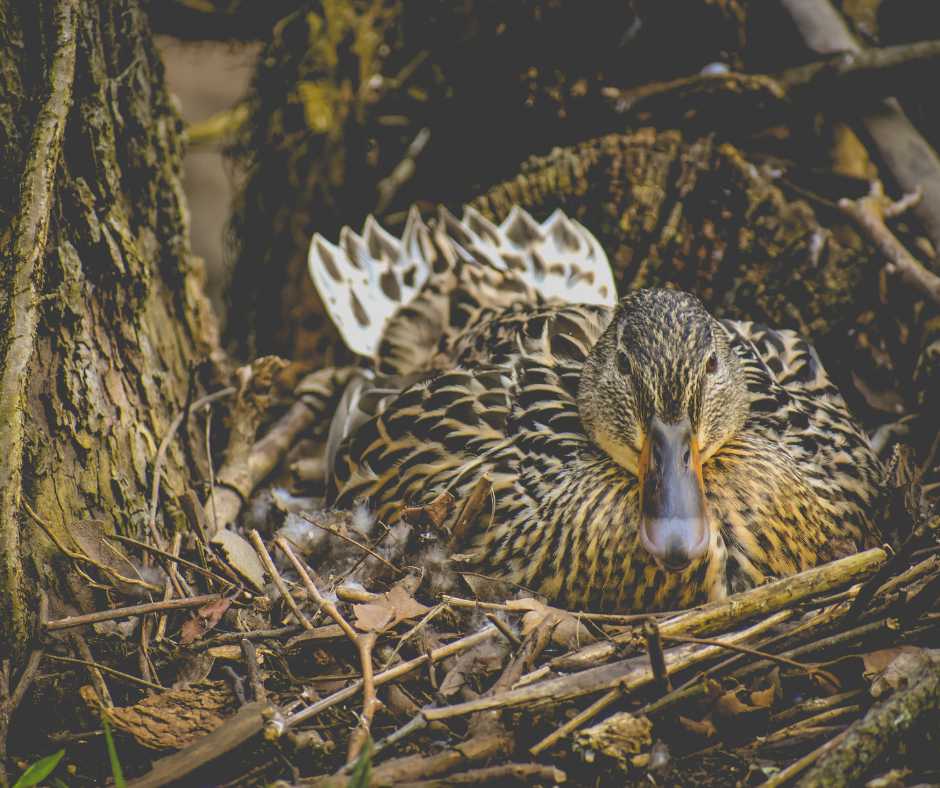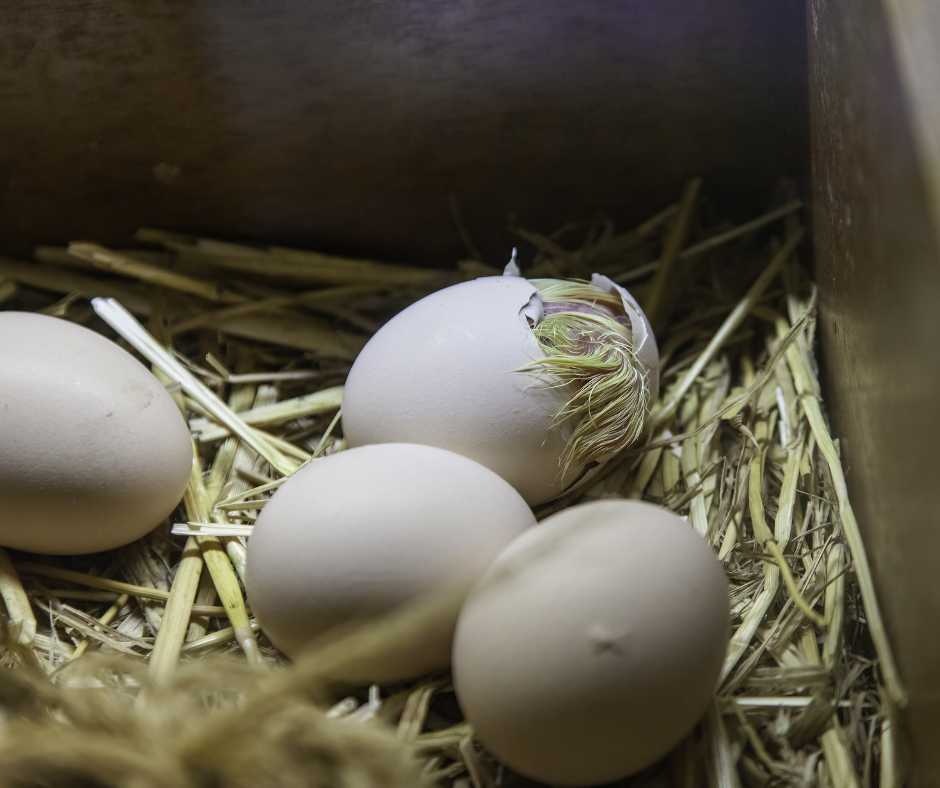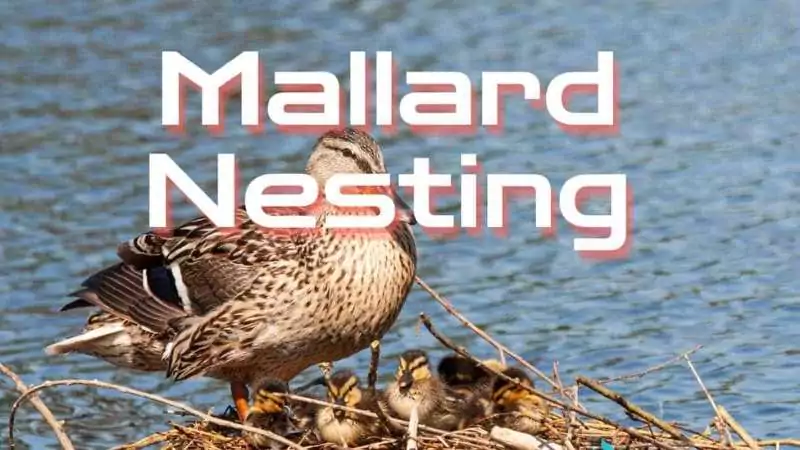Have you ever seen those ducks at the park or by a pond and wondered where they make their homes? It’s pretty cool to think about! Mallards, those ducks we often see around, are really good at finding places to live, both in quiet country waters and in busy cities.
In this blog, we’re going to take a closer look at ‘mallard nesting.’ We’ll check out all the different places they like to build their nests, from the banks of rivers to hidden spots in cities. And we’ll see how they make their nests, which is pretty clever.
Get ready to learn all about where these ducks bring up their ducklings, how they keep their eggs safe, and what tough stuff they deal with as their world keeps changing. Let’s start this awesome adventure into the world of mallards and their nests!
| Aspect | Details |
| Preferred Habitats | Ponds, Lakes, Riversides, Marshes |
| Urban vs Rural Nesting | Rural: Tall grasses, reeds, bushes; Urban: Parks, quiet corners in neighborhoods |
| Nest Materials | Grass, Twigs, Leaves, Down feathers |
| Egg Characteristics | Color: Greenish-beige/Gray/Off-white; Size: Like a large chicken egg; Clutch Size: 8-13 eggs |
| Predation Challenges | Foxes, Raccoons, Large birds |
| Human Impact | Habitat loss, Pollution |
| Conservation Efforts | Protecting wetlands, Clean waterways, Supporting wildlife conservation organizations |
Understanding Mallard Nesting Locations
What Are the Preferred Habitats for Mallard Nesting?
Mallards are quite adaptable when it comes to their living quarters. They typically prefer habitats that provide safety, access to water, and ample food. Their favorite spots include:
- Ponds
- Lakes
- Riversides
- Marshes
These water-rich environments are not just for their scenic beauty; they are essential for their survival, offering a rich supply of food and a haven for their ducklings.

How Do Urban and Rural Nesting Sites Differ for Mallards?
Mallards are versatile when it comes to choosing their nesting locations. In rural settings, they prefer the quiet and seclusion of nature, often nesting in tall grasses or among reeds and bushes.
These spots offer them peace and minimal disturbance, crucial for egg-laying and raising their ducklings. Contrastingly, urban mallards display remarkable adaptability. Faced with the hustle and bustle of city life, they find solace in secluded spots within parks or quiet corners of neighborhoods.
Despite the noise and chaos, urban mallards have learned to thrive, creating safe havens for their young, even in the heart of the city.
| Aspect | Rural Nesting Sites | Urban Nesting Sites |
| Location | Tall grasses, reeds, bushes | Parks, quiet neighborhood corners |
| Environment | Quiet, undisturbed, close to nature | Noisy, chaotic, amidst human activity |
| Adaptation | Natural nesting instincts in serene settings | Remarkable adaptability to urban challenges |
| Safety Concerns | Predators like foxes and birds of prey | Human disturbances, environmental pollution |
| Nesting Habits | Traditional, ground-based nests | Innovative nesting in less typical locations |
This comparison highlights the mallard’s incredible ability to adapt to varying environments, ensuring the survival and growth of their species in diverse habitats.
What Design and Materials Define a Mallard’s Nest?
Mallard nests are really cool examples of how smart nature can be. Picture this: a female mallard duck, which we call a hen, goes around picking up stuff like grass, twigs, and leaves. She’s not just gathering; she’s planning. She uses these bits and pieces to build her own little home – a nest that’s shaped like a bowl.
But she doesn’t stop there. The hen then takes some of her feathers and lines the inside of the nest. Why? Well, these feathers keep her eggs super warm and cozy. Plus, they help hide the nest from animals that might want to disturb it. It’s like her own secret hideaway for her eggs!
This way of making a nest is not just smart; it’s also really practical. By using simple things she finds in her surroundings, the hen makes a safe and snug place for her future ducklings. It’s like she’s a little architect using nature’s tools to build the perfect home. It shows us how well mallards can adapt and use what’s around them to take care of their families.

Examining the Phenology of Mallard Nesting
When Do Mallards Start Nesting?
As spring rolls around and nature awakens, so do the nesting instincts of mallards. Typically, they start their nesting activities in late April and early May, but the exact timing can vary. In warmer regions, you might see nesting activity begin earlier, while in colder areas, they might wait for the snow to melt and the temperatures to rise.
Does Nesting Behavior Vary Across Different Geographical Locations?
Indeed, geography plays a crucial role in the nesting behaviors of mallards. In colder northern regions, the nesting season might be shorter due to the brief window of warm weather. In contrast, mallards in warmer southern areas may have a longer nesting period. The local climate and environmental conditions significantly influence when and how mallards nest.
How Do Mallards Build Their Nests?
When female mallards get ready to build their nests, they’re like the boss of the building site. They look for a secret spot that’s still near the water. Then, they start making the nest by scooping out a little hollow in the ground.
They use grass, leaves, and twigs they find lying around to shape it into a cozy nest. What they find to use for the nest and the kind of ground they’re building on really matter. It decides how the nest will end up looking. It’s like they use what’s around them to make the best home for their eggs.
Uncovering the Mysteries of Mallard Eggs
What Are the Key Characteristics of Mallard Eggs?
Mallard eggs are fascinating and feature specific characteristics for protection and development. These include:
Egg Characteristics:
Color: Typically greenish-beige, gray, or off-white, helping them blend in with the nest environment.
Size: Roughly the size of a large chicken egg.
Clutch Size: A typical clutch may contain anywhere from 8 to 13 eggs.

How Does the Mallard Ensure Successful Incubation and Hatching?
The dedication of the mother mallard during the incubation period is remarkable. She incubates the eggs for approximately 28 days, during which she rarely leaves the nest. This constant care and warmth are crucial for the successful development and hatching of the eggs. The mother’s vigilance also protects the eggs from potential threats and disturbances.
Exploring Fledgling Growth and Parental Care
What Is the Growth Journey of a Mallard Duckling?
The journey from egg to independence for mallard ducklings is a fascinating process. Within a day of hatching, these little ones are ready to take to the water. Under the watchful eye of their mother, they quickly learn the essentials of duck life – swimming, foraging for food, and steering clear of dangers.
How Do Parent Mallards Ensure the Survival and Development of Their Young?
The mother hen plays a pivotal role in the survival and upbringing of her ducklings. She leads them to water, teaches them how to find food, and keeps a vigilant eye out for predators. The first few weeks of a duckling’s life are filled with learning and exploration, all under the careful guidance of their mother.
Threats and Conservation
What Predation and Environmental Challenges Do Mallards Face During Nesting?
Life isn’t always a smooth sail for these ducks. Predators such as raccoons, foxes, and even large birds pose a significant threat, especially to eggs and young ducklings. Additionally, human activities can lead to habitat loss and pollution, further endangering these birds. But we can make a difference by being mindful of our actions and their impact on mallard habitats.
How Can Conservation Efforts Support Mallard Nesting Habitats?
Conservation efforts are crucial in supporting mallard nesting habitats. Effective measures include:
Conservation Efforts:
- Protecting wetlands, which are essential breeding grounds for mallards.
- Maintaining clean waterways ensures a healthy environment for mallards to feed and nest.
- Supporting wildlife conservation organizations that work towards protecting and restoring mallard habitats.
By supporting organizations dedicated to wildlife conservation, like The National Audubon Society, we can contribute to the well-being of these beautiful birds.
People Also Asked
How can we distinguish between a male and female mallard?
The male, or drake, sports a glossy green head, while the female has a mottled brown appearance.
Are mallard ducklings able to swim as soon as they hatch?
Yes, they are natural swimmers and start swimming almost immediately after hatching.
Why do mallards often nest in urban areas?
Urban areas can provide unexpected but suitable nesting spots and abundant food sources.
What happens to mallard nests after the breeding season?
Mallards generally don’t reuse nests. They build new ones each year, although they might return to the same area.
Wrap Up
Mallards are more than just the ducks you see at the park. Their intricate nesting habits and the care they show for their young are a testament to the wonders of nature. By understanding and respecting these habits, we can help ensure that mallards continue to thrive in our waters and skies.

